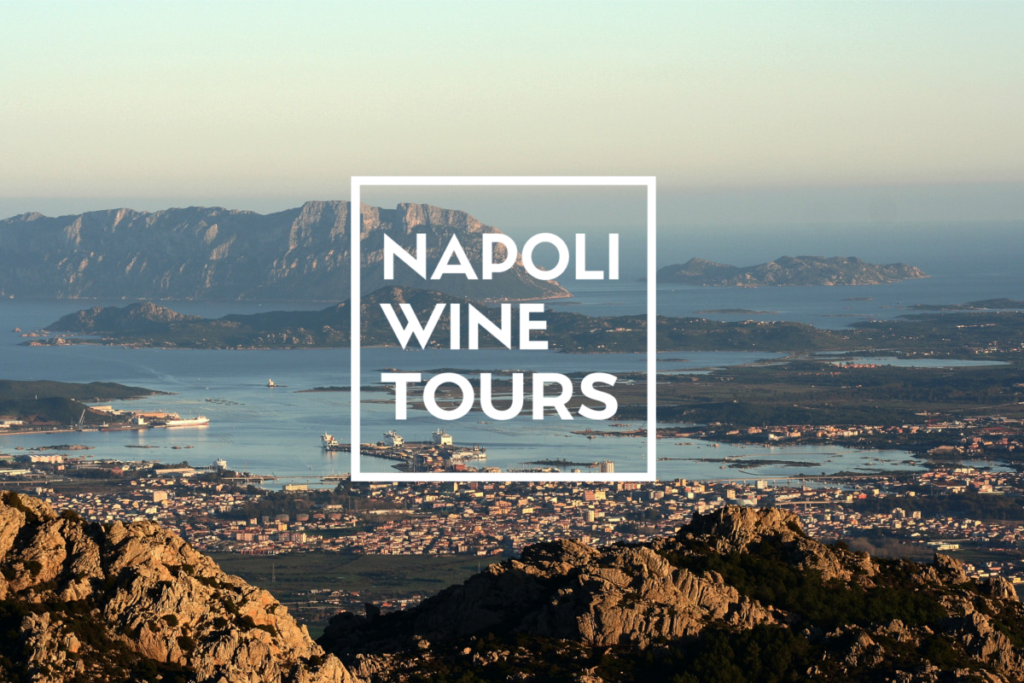
Watch the videopoem by Ettore Nigro for NapoliWineTours on the Capichera
The quote from a very famous 1992 film (DEATH BECOMES HER) was inevitable after our tasting of two bottles of Vermentino from the Capichera wine company. First of all, we will try to keep your curiosity alive by telling 2000 and 2016 vintages were tasted.
But let’s start as always by briefly introducing the grape variety, the wine and the company.
Vermentino is a semi-aromatic white grape (but we can also find it with a red grape), called Favorita in Corsica and Piemonete and Pigato in Liguria. Its origins are uncertain, but it is accepted by almost everyone that it comes from the Iberian Peninsula from where it disappeared. Passing through the South of France, Liguria (Colli di Luni, Cinque Terre, etc) and Tuscany (Maremma, Bolgheri, etc) he arrived in Sardinia where he found his chosen territory.
Wines produced with this grape are very different depending on the area of origin, but the organoleptic characteristic common to all (due to the proximity of all regions to the sea) is the flavor!
We now come to the company: the ancient name of the family estate was Capichera (from the Latin caput erat means precisely “it was the capital”). Located on the north-east side of Sardinia, in the heart of Gallura, it has contributed to giving prestige to Vermentino in the world. The first members of the Ragnedda family were able to value the versatility of their Vermentino, but above all the aging potential. Their Vermentino, which is produced with different labels, is also made unique by the wise use they make of aging in wood.
Capichera, Isola dei Nuraghi IGP, 2016, 14.5°.
Made with 100% Vementino grape, fermentation takes place in stainless steel tanks at a controlled temperature of 18 degrees and then in wooden cusks. It is then bottled and aged in the bottle for three months before its distribution. Before moving on to the technical tasting it is necessary to underline the very strong character of this wine, it needed time to open and release the fruit aromas that initially were almost hidden or covered by the herbaceous freshness. Even a hydrocarbon appeared on the nose, a hint of iodine and flint… in short, an emotion and revelation… .persistent and really interesting. In our opinion… a 2016 is still in its infancy, it needs a few more years in the bottle
Color: straw yellow tending to golden, crystalline
Scent: As soon as the bottle was uncorked, a hint of hydrocarbons was prevalent (it could have been passed for a riesling). Herbaceous aromas are vast: thyme, sage, rosemary. Then the white flowers come with some unripe exotic fruit. The aromatic range is truly broad and enriches with the passage of time in the glass.
Taste: TASTY! Forgive the capital letters, but you have to write it like this! More than savory iodized! Freshness arrives and balances this explosion for the taste buds. The olfactory aromas are all confirmed and are enriched with yellow fruits (peach, cantaloupe melon). It should be emphasized that the heat of 14.5 ° does not unbalance, indeed it helps to balance this great flavor
Capichera, Vigna’ngena, table wine, 2000, 13.5 °
First of all we need to specify that the Vigna’Ngena today is DOCG Vermentino di Gallura, but the bottle we uncorked has the wording Vino da Tavola on the label. Vign’angena in the Gallura dialect means vineyard of others. The name refers to the grapes from vineyards under management, with which this wine was produced in the very first years up to the productive maturity of the new owned plants. Vinified for the first time in 1994, very fragrant, mineral, and intense, Vign’angena is the expression of Vermentino di Gallura vinified exclusively in steel tanks. One could talk for hours about this bottle which is placed on a par with philosophical questions of great daring. But what is perhaps most poetic to underline is the evolution of this wine. 21 years have passed since the harvest. The color is amber, it is feared upon opening an undrinkable oxidation in the glass, but instead … it is elegant and proud! Sure, a transalpine (withered) would say a bit faded … but he still keeps his head up high. The hints have evolved towards candied citrus fruits, bitter orange marmalade… the freshness is at the limit, the sapidity only hinted at, but after 21 years this wine is still incredibly drinkable!
Color: amber, and crystalline
Scent: candied orange peel, apricot jam, cinnamon,
Taste: citrus, bitter orange marmalade, chestnut honey. The flavor and freshness are at the limit, but they still exist. The evolutionary and aging capacity of this wine is surprising.
